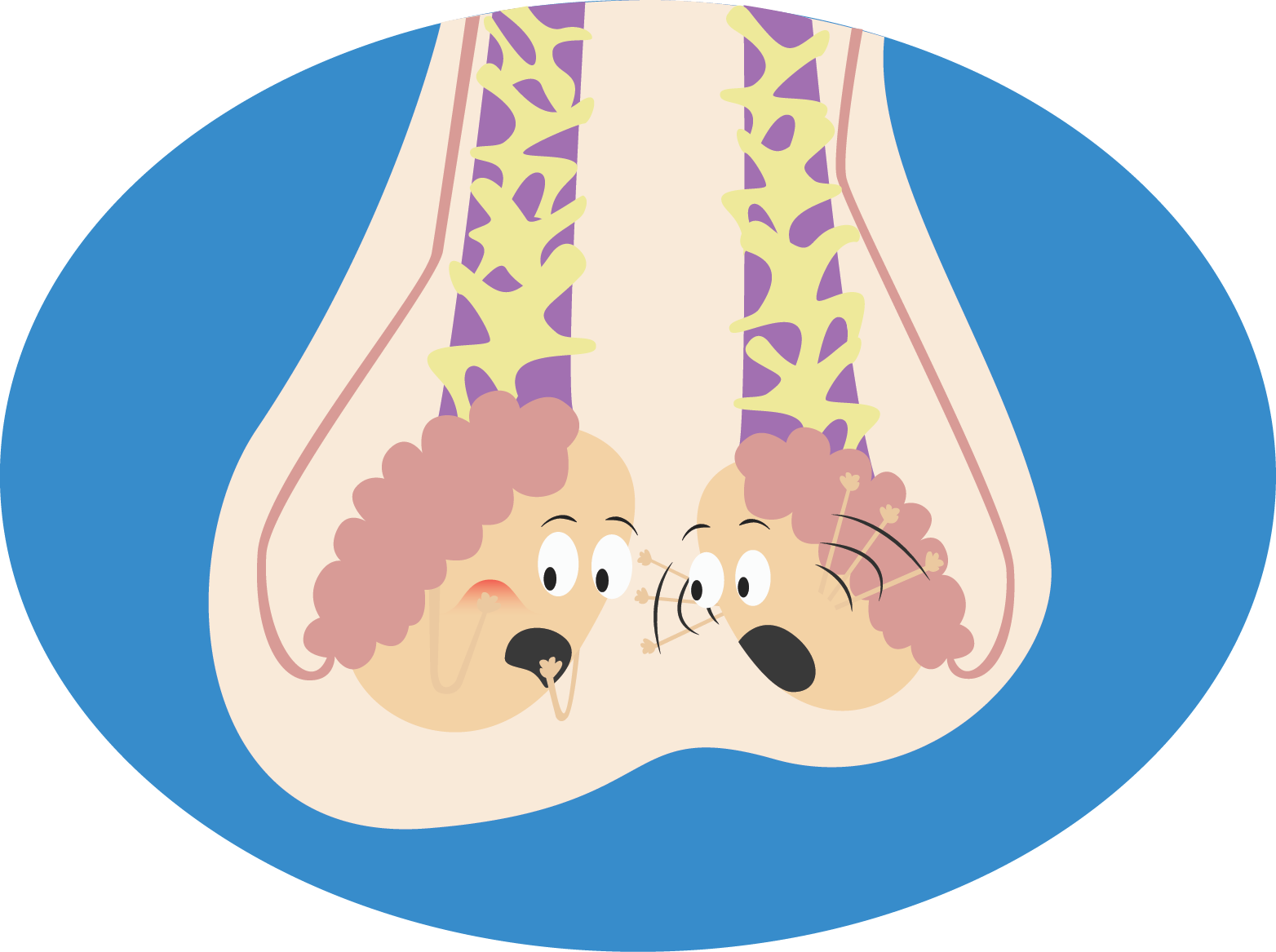0%
Signs and Symptoms of Testicular Cancer

A standard human testicle is about the size of a walnut. You may think you’re packing a coconut, but the reality is men are all pretty much the same size on average. The most obvious sign that you may have a tumorous testicle is if this changes.
“When I first called my GP for an appointment to check my right testicle, it was about the size of a table tennis ball.” – Ian Arnison-Phillips (BTUK Trustee).
This is why it is important to regularly check your nuts and make sure everything is as it should be. Luckily for our Ian, he saw a doctor as soon as he noticed something odd. He therefore caught it early enough for it to remain a Stage 1 tumour – meaning it did not spread. Had he left it any longer, the cancer could have spread, and he probably would have needed more extensive treatment, such as chemotherapy.
Size really does matter in this case
The old saying goes, it’s not the size that matters it’s what you do with it. Well in this case it is both. Size does certainly matter for your testicles in that if they become enlarged or change shape in any way, you should get it checked out as soon as you can. It also matters what you do with them, as you should ideally be checking them out at least once a week.
How to check your nuts
- Take a warm shower or bath so your skin is relaxed.
- Examine one testicle at a time by taking the testicle between your thumb and first two fingers and roll with consistent gentle pressure.
- Feel for any lumps or changes in shape, size or consistency.
- Make sure to also check the epididymis towards the back of the testicle.
- If you notice a change or you feel a lump, don’t panic, but do get checked out.
Most lumps are not cancerous, but if you do notice anything unusual or anything concerning you should visit your doctor as soon as you can, to be on the safe side.
Other signs and symptoms of testicular cancer
There are other less common signs of testicular cancer, which may include:
- A dull ache or pain in the abdomen, groin or scrotum
- A heavy feeling in the scrotum
- A sudden collection of fluid in the scrotum
- Back pain
These can be signs or symptoms of a number of different things, not necessarily cancer. Still though, if you have any of these symptoms and they persist, you should go and get checked out!
Risk factors and causes
The exact causes of testicular cancer are still unknown. However, based on statistics from previous patients, there are a number of factors that can increase your risk of developing testicular cancer.
Risk factors include:
- Caucasian men: Higher risk than other ethnic groups
- Taller men: Strangely enough, taller men are more likely to get it than smaller men
- Twins: The risk is even more so if you are an identical twin
- Family history: If any men in your family have had testicular cancer in the past
- Undescended testicle: If you are born with this condition you are more likely to experience testicular cancer
Having one or more risk factors doesn’t mean that you will certainly have testicular cancer. The disease is rare, even if you have some of these risk factors.
Do your part! Check your nuts!
If you check your balls frequently and see a doctor if you do find something unusual, then you have done all you can. Statistics suggest you will be absolutely fine, even if you do find something. These statistics cannot help you if you do not help yourself though!
Check regularly! Do not put off calling the doctor if you find a lump! You could potentially save your life!

